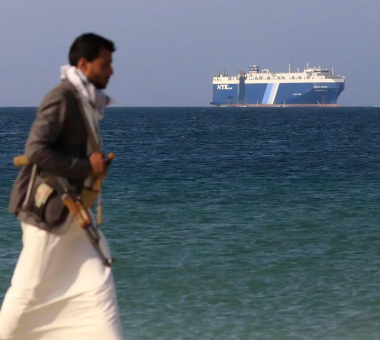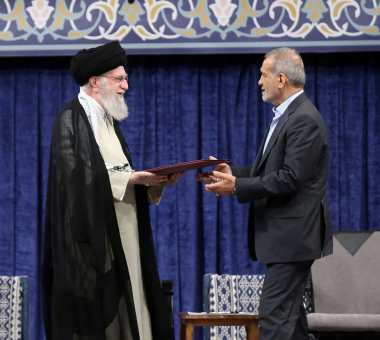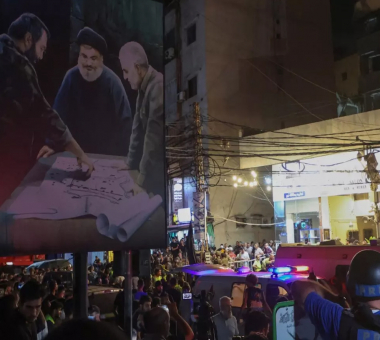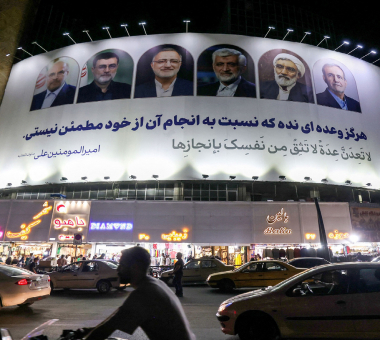Houthi military operations linked to maritime trade have escalated in both quantity and quality since the movement announced the commencement of “phase four” operations on May 3. This phase involves expanding their targeting of ships heading to Israel in the Mediterranean Sea. Concurrently, all parties involved in the “Unity of Arenas” have shown increased interest in claiming responsibility for attacks or espionage activities against Israeli installations along the Mediterranean coast. This suggests that Iran is attempting to project an image of itself and its allies’ ability to influence the Mediterranean scene. However, this perception does not appear to be supported by concrete data and tools and faces multiple international and regional challenges and complexities.
Features and Implications of the Escalation
The announcement of the Houthi’s phase-four escalation, made by Brigadier Gen. Yahya Saree, the movement’s military spokesperson, involves targeting all ships that violate “the ban of entry into the ports of occupied Palestine” (i.e., Israel) in all areas reachable by their weapons. This marks an expansion of Houthi military operations that began November 2023 in phase one with attacks on Israeli ships in the Red Sea. The operations then included targeting ships from the U.S.-led Operation Prosperity Guardian military coalition and subsequently expanded to the Indian Ocean, Gulf of Aden, and Arabian Sea.
The reach has now extended to the Mediterranean Sea, coinciding with Israel’s military operations in Rafah and the seizure of its crossing on May 7. As part of this phase, the Houthis have claimed responsibility for more than six operations in the Mediterranean against Israeli ships and allied vessels heading to the port of Haifa.
In fact, since the first day of the war, Iran has pushed the Houthis to lead the escalation due to their military and political advantages. This escalation is less likely to cause a regional war or provoke a significant military response from the United States and Great Britain beyond preventive strikes. This contrasts with the risks associated with Hezbollah’s escalation, which could lead to direct war with Israel, or the armed factions in Iraq, which have previously faced significant U.S. retaliation, such as the extensive U.S. strikes on the Hezbollah Brigades following the January drone Tower 22, a U.S. military base in Jordan.
On the other hand, the Houthis theoretically aim to strengthen the negotiating position of Palestinian factions at a time when Hamas’s priorities are varied, especially with Israeli presence in Gaza and the ongoing geopolitical and geographical restructuring of the region. In this context, Houthi leaders have mentioned the fate of the Galaxy Leader, the cargo ship sailing under the flag of the Bahamas that they seized November 19, 2023, andsuggested its connection to Hamas. However, this has not manifested as a real leverage for the Palestinian factions.
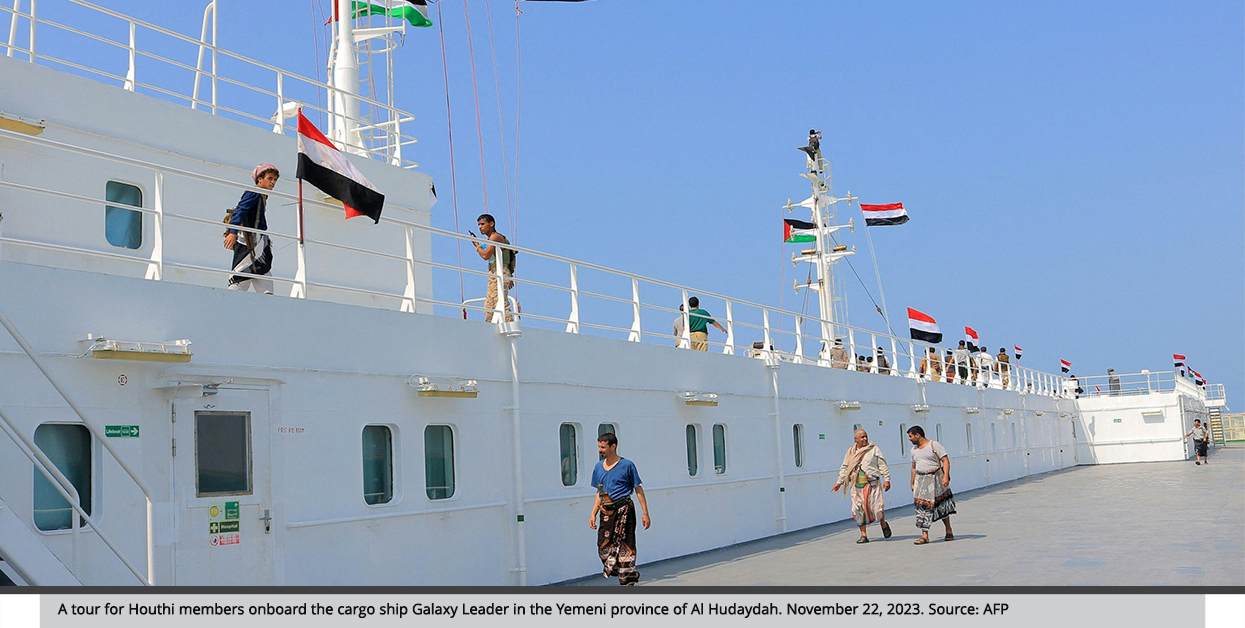
Iran’s Growing Interest in the Mediterranean
The joint operational mechanism of the entire Iranian axis and the movements of the parties within the “Unity of the Arenas” have shown increasing interest in the Mediterranean region recently. Iraqi armed factions have announced several attacks on Israeli areas overlooking the sea, either jointly with the Houthis, as in the claimed targeting of a “vital target” in Haifa on June 27 and again on July 2, or individually, as in the claimed targeting July 10 of the Orot Rabin power plant located on the Mediterranean coast in Hadera, Israel.
In mid-June, Hezbollah released a video showing aerial surveillance using a drone of military and security areas, seaports, and airports in the Israeli city of Haifa, in addition to unspecified locations within the exclusive economic zone in the sea. On June 19, Hezbollah Secretary-General Hassan Nasrallah warned Cyprus that it could become a target itself if it allowed Israel to use its military facilities to attack Lebanon.
In fact, Iran and its allies are attempting to test the limits of pressure on Israel, as the Mediterranean Sea is the main gateway for Israeli trade and maritime navigation. This region includes Israel’s strategic facilities, whether located on the coast such as the Port of Haifa, in industrial and military areas, storage and energy facilities, or those in territorial waters like the Israeli Karish oil and natural gas field, which Hezbollah threatened to target in June 2022. The frequent statements from the parties within the anti-Israeli “unity of the arenas” regarding targeting Israeli sites along the Mediterranean coast indicate their intelligence and operational readiness in the event of a broader conflict, especially between Hezbollah and Israel.
Additionally, the continuous threats or claims of targeting American naval presence by these parties are noteworthy. The Houthis claimed to have targeted American forces on June 22, 2024, when it announced an attack against the American aircraft carrier USS Dwight D. Eisenhower, which the United States denied. In his first speech on the Israel-Gaza war in November 2023, Nasrallah threatened to target the American fleet, which at that time was led by the aircraft carrier USS Gerald R. Ford, the largest aircraft carrier in the world, although the secretary-general noted there is no confirmed evidence that either Iran or its allies possess weapons capable of targeting U.S. Navy aircraft carriers.
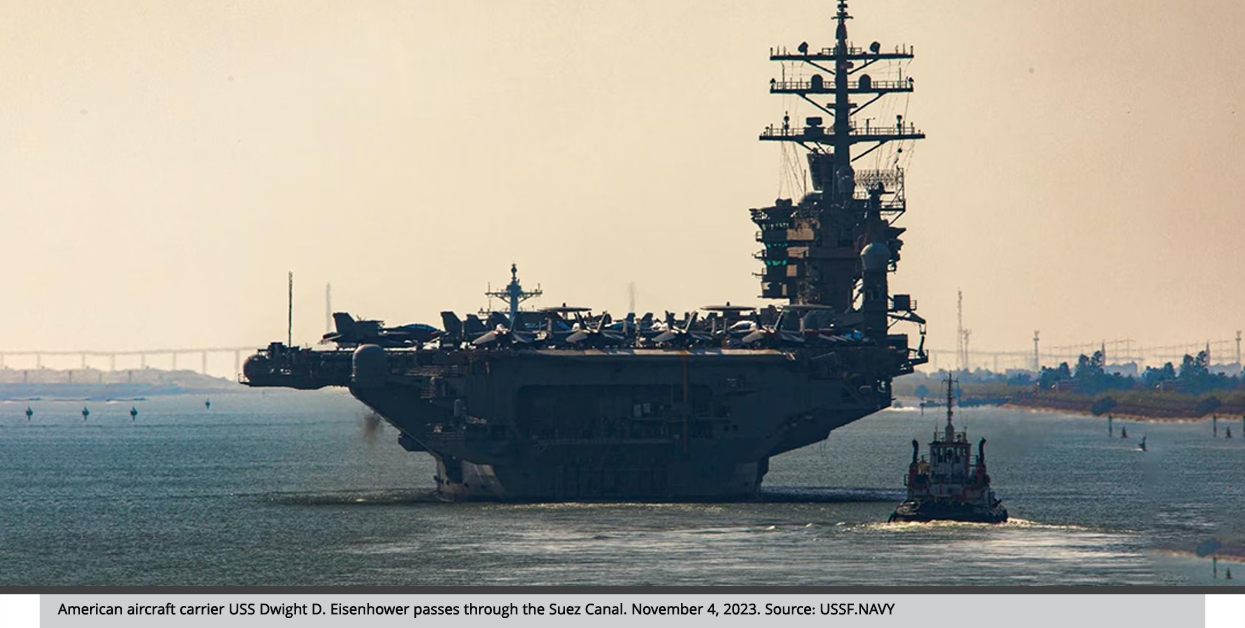
Determinants of Iranian Activities in the Mediterranean Sea
Iran’s attempts to encourage its allies to increase their activities in the eastern Mediterranean are not solely related to the ongoing war in Gaza or the accompanying escalation in secondary arenas. Instead, they aim to create a general perception of Iran’s ability to influence various strategic areas and the surrounding waterways in the Middle East. This has significant strategic implications for the economic and political interests of regional countries bordering the Mediterranean, as well as for international navigation and trade.
Iran has previously demonstrated a considerable capability to destabilize the Strait of Hormuz, the only sea passage from the Persian Gulf to the open ocean, through the Islamic Revolutionary Guard Corps and the Red Sea through the Houthis. These efforts rely on Tehran’s informational, intelligence, and military support. Now, Iran is testing its own and its allies’ ability to operate in the Mediterranean region. Iran’s ambitions, however, face several constraints and complexities, mostly related to geography, military capabilities, and the challenges of managing escalation and its repercussions in the Mediterranean Sea.
For instance, the Houthi announcement of entering its fourth operational phase (and its readiness for subsequent phases like the fifth and sixth) appears more propagandistic than militarily accurate. It’s true the Houthis have demonstrated a significant threat capability in the Red Sea and Bab el-Mandeb Strait, but as U.S. Navy leaders told the Associated Press this June, the economic repercussions of the western maritime campaign against the Houthis is the most intense since World War II.
The Port of Eilat, a primary target in the Houthi blockade of Israeli ships in the Red Sea, faces economic risks, potentially leading the port’s CEO, Gad Rosenblum, to lay off half of its 120-member staff. However, the Houthis escalating the effectiveness of its attacks in the Mediterranean are questionable. Despite possessing long-range weapons like the Toophan ballistic missiles that have a range of about 1,200 miles and Shahed-136 “suicide” drones that can carry more than 100 pounds of explosives toward preprogrammed targets up to 1,500 miles away, it is unclear to what extent the Houthis can threaten maritime traffic towards Israel in the Mediterranean Sea or pose a strategic threat to Israeli assets in regional waters.
Previously, geographic factors have mitigated the effectiveness of complex Iranian attacks towards Israel, as seen in this year’s April 14 Iranian composite attack against which Israel claimed to have intercepted 99% of the missiles and drones Iran launched. This interception was aided significantly by regional and U.S. air defense systems.
The same applies to Iraqi factions targeting facilities overlooking the Mediterranean Sea, where the nature of these operations differs significantly from claiming responsibility or confirming execution, especially if they do not hit their target. Israel, in response, periodically announces interceptions of “aerial attacks from the east,” a term the Israeli army uses when referring to attacks carried out by the “Islamic Resistance in Iraq.”
However, Hezbollah in Lebanon may indeed be the only faction among the Axis of Resistance capable of threatening Israeli facilities overlooking the Mediterranean Sea or maritime navigation therein. Nevertheless, such actions carry severe repercussions, especially in terms of Israeli and American responses that could quickly develop into a large-scale Israeli military operation in Lebanon.
Additionally, there is the risk of targeted assassinations that could strike senior leaders of Hezbollah or its strategic infrastructure. This is compounded by the extensive intelligence exposure of Hezbollah to Israel, as demonstrated by Israeli airstrikes targeting prominent leaders within the organization.
Finally, Iran and its allies still have limited capability to operate and influence events in the Mediterranean Sea. The increasing Iranian interest in the region can be seen as a test of its regional and international capabilities—as well as a test of the response from concerned nations to these threats. It is important to closely monitor Iran’s recent actions, especially amid escalating tensions, and determine what those actions reveal about new capabilities and potential risks.
Keep in touch
In-depth analyses delivered weekly.








